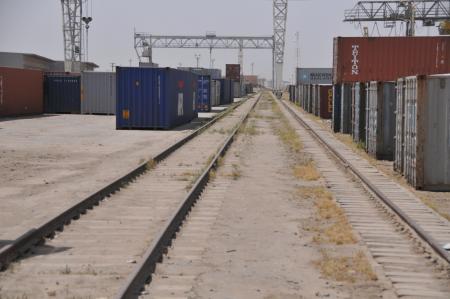News from the Naibabad freight terminal, with some photos of goods being unloaded from trains.
Rail Port 4, Niababad, a crane lifts steel rebar rods out of a railroad gondola car, the steel rebar is then manhandled and lifted onto trucks for transportation to construction sites around Afghanistan. The steel rebar was imported through Uzbekistan. (U.S. Army photos by Sgt. 1st Class Timothy Lawn, 1st Theater Sustainment Command Public Affairs/Released)
Rail Port 4, Niababad, Afghan laborers begin the manually intensive process of offloading 100 pound plus bags of baking flour from a boxcar onto waiting semi trucks for shipment to Afghan markets. The flour was imported through Uzbekistan. (U.S. Army photos by Sgt. 1st Class Timothy Lawn, 1st Theater Sustainment Command Public Affairs/Released)
1st TSC Rail Advisory Team hosts key leader engagement with Afghan Rail Authority
1st Sustainment Command (Theater) Public Affairs
Sgt. 1st Class Timothy LawnNIABABAD, Afghanistan – 1st Theater Sustainment Command, Afghan Rail Advisory Team, host a Key Leader Engagement with members of the Afghanistan Ministry of Customs and Industry at rail Port 4, Niababad, Afghanistan, Oct 13.
The ARAT team is comprised of civilian and military railroad operational and business experts who are working with the Afghanistan Railway Authority on a train, advise and assist mission. They also provide the ARA with railroad advice, and options on improving rail operations, safety, law enforcement and railway industry development.
Maj. Timothy Christensen leads the ARAT, hosted by the Afghan MOCI delegation at rail Port 4. The rail hub crosses the famed Friendship Bridge and links Mazar-i-Sharif, Afghanistan and Uzbekistan in the north. They presented the Afghan delegation with a map of the existing rail infrastructure at the port. The map was created by the Transportation Engineering Agency, which is part of Surface Deployment Distribution Command. Additionally, the team’s mission was to address the Afghan’s railroad business concerns.
After the meeting the ARAT team and Afghan delegation toured the rail facility.
Source: DVIDS, 21 October 2013







